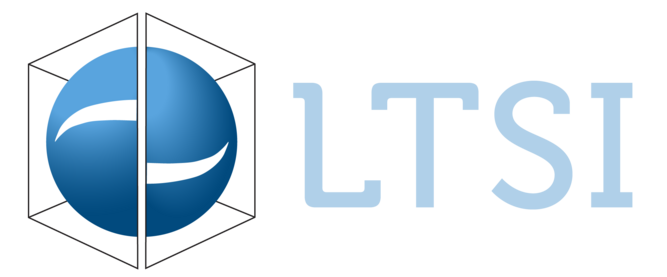Le 28/08/2013, M Krzysztof JURCZUK soutient sa thèse de Doctorat Mention Traitement du Signal et Télécommunications en cotutelle avec l’Université de Technologie de Bialystok, intitulée : Calcul parallèle pour la modélisation d’Images de Résonance Magnétique Nucléaire. La soutenance a lieu à Bialystok University of Technology, Faculty of Computer Science, devant le jury composé de :Leon BOBROWSKI, Professeur, Bialystok University of Technology, Pologne ; Olivier BEUF, Directeur de Recherche, Université Lyon 1, France / rapporteur ; Andrzej MATERKA, Professeur, Lodz University of Technology, Pologne / rapporteur ; Hervé SAINT-JALMES, Professeur, Université de Rennes 1, France / examinateur ; Jaroslaw STEPANIUK, Professeur, Bialystok University of Technology, Pologne / examinateur ; Johanne BEZY-WENDLING, Maître de conférences, Université de Rennes 1, France / directeur de thèse ; Marek KRETOWSKI, Professeur, Bialystok University of Technology, Pologne / directeur de thèse
Résumé :
The PhD thesis concerns computer modeling of magnetic resonance imaging (MRI). The main attention is centered on imaging of vascular structures. Such imaging is influenced not only by vascular geometries but also by blood flow which has to been taken into account in modeling. Next to the question about the quality of developed models, the challenge lies also in the demand for high performance computing. Thus, in order to manage computationally complex problems, parallel computing is in use.
In the thesis three solutions are proposed. The first one concerns parallel algorithms of vascular network modeling. Algorithms for different architectures are proposed. The first algorithm is based on the message passing model and thus, it is suited for distributed memory architectures. It parallelizes the process of connecting new parts of tissue to existing vascular structures. The second algorithm is designed for shared memory machines. It also parallelizes the perfusion process, but individual processors perform calculations concerning different vascular trees. The third algorithm combines message passing and shared memory approaches providing solutions for hybrid parallel architectures. Developed algorithms are able to substantially speed up the time-demanded simulations of growth of complex vascular networks. As a result, more elaborate and precise vascular structures can be simulated in a reasonable period of time. It can also help to extend the vascular model and to test multiple sets of parameters.
Secondly, a new approach in computational modeling of magnetic resonance (MR) flow imaging is proposed. The approach combines the flow computation by lattice Boltzmann method, MRI simulation by following discrete local magnetizations in time and a new magnetization transport algorithm together. Results demonstrate that such an approach is able to naturally incorporate the flow influence in MRI modeling. As a result, in the proposed model, no additional mechanism (unlike in prior works) is needed to consider flow artifacts, what implies its easy extensibility. In combination with its low computational complexity and efficient implementation, the solution is a user-friendly and manageable at different levels tool which facilitates running series of simulations with different physiological and imaging parameters.
The goal of the third solution is to apply the proposed MR flow imaging model on complex vascular networks. To this aim, models of vascular networks, flow behavior and MRI are combined together. In all the model components, computations are adapted to be performed at various parallel architectures. The model potential and possibilities of simulations of flow and MRI in complex vascular structures are shown. The model aims at explaining and exploring MR image formation and appearance by the combined knowledge from many processes and systems, starting from vascular geometry, through flow patterns and ending on imaging technology.
